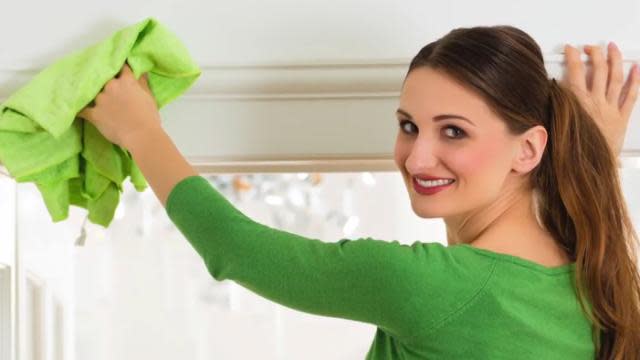Wellness Wednesday: Find out what toxins actually are and how to avoid them
Welcome to Wellness Wednesday! This article is part of a series of weekly wellness stories written to help inspire healthy and happy living in our wonderful readers. Be sure to check back every Wednesday for the latest in fitness, nutrition, natural beauty and lifestyle tips to help you be your best self!
If you're anything like us, you've no doubt been warned to beware of foods, home goods and other things that allegedly introduce 'toxins' into your body. Juice cleanses and smoothie mixes are advertised as ways to 'detox,' and while detoxing seems to be all the rage these days, not a lot of people can actually identify what, in fact, a toxin really is.
We're here to clear up the confusion. Technically, the word 'toxin' refers to naturally occurring poisons like arsenic, lead and mercury, while the word 'toxicant' actually refers to manmade poison, and is often the kind of 'toxin' we're supposed to be wary of.

So how do we differentiate and make sense of all this? Thankfully, we got to chat with Sophia Ruan Gushée, the author of A-Z of D-Toxing: The Ultimate Guide to Reducing Our Toxic Exposures.
Toxicants, she told us, "exist in our environment more than intended as a result of human activity." According to her, there have been over 84,000 chemicals introduced into American commerce since World War II. "The EPA has only been able to test the safety for just over 200 of them," Ruan Gushée said, "and they only regulate five." As a result, these toxic chemicals show up in our homes in televisions, computers and the materials that make up our furniture like carpeting, sofas and mattresses.
While that was certainly enough to freak us out, the wellness expert ensured us that there are lots of ways to reduce unnecessary exposure to toxicants. We may not be able to change the materials our homes are made of, but she does provide a few ideas for more doable changes to make in her new book.
Click through the slideshow below for 10 ways to detox your home:
(Article continued below)
The first and best way to start ridding yourself and your home of unnecessary exposure is to declutter, Ruan Gushée advised. "So many things in our home can release toxicants into our air and dust," she said, so by "editing our possessions" we can minimize harmful effects.
The second way to reduce toxicants in your home is as simple as owning a doormat. The EPA estimates that having a large doormat at your front door or at the bottom of the stairs where people can remove their shoes reduces lead dust by 60%, Ruan Gushée said.
The craziest thing about the dust that gets brought into our homes is that it's made up of toxicants that were banned decades ago! "Some of these chemicals are really pervasive and travel the world through the grasshopper effect," the detoxing expert told us. "They don't break down for years, decades, and for some, centuries."
Another way to cut down on toxic exposure in your house is to open the windows. We were shocked to learn that indoor air tends to be two to five times more polluted than outdoor air, even in urban areas like New York City. All the things that make up our homes like mattresses, carpets and paints contribute to the toxicity of indoor air, so opening your windows allows an escape route and a fresh air exchange.
%shareLinks-quote="It's all about having information to make healthy choices." type="quote" author="Sophia Ruan Gushée" authordesc="author of 'A-Z of D-Toxing'" isquoteoftheday="false"%
"But be thoughtful about it," Ruan Gushée said, "Opening your windows on a cool night can help your indoor air quality, but keep them closed if there's a garbage truck on the street, for example."

Lastly, paying attention to diet can also help keep you and your family away from toxicants. Some of the most persistent chemicals are fat soluble, according to Ruan Gushée, which means they're attracted to fat and will settle in fat. So animals and animal bi-products with fat (like meat, poultry and dairy) also have higher concentrations of fat soluble toxicants. "When you're prioritizing your budget, you'll want to choose organic as much as possible and reduce your consumption of those things," Ruan Gushée advised.
Thinking about food packaging, too, is important. Cooking tools with non-stick surfaces and grab-and-go food items like nutrition bars with non-stick coating have harmful chemicals that can reach the food, so you'll consume it that way.
Don't worry, though! The toxicant specialist doesn't think you need to take all the fun out of your life. "You can still have potato chips and ice cream, just have less," she said. "It's all about having information to make healthy choices."
To learn more about how you can lessen your intake of toxic substances, check out Sophia Ruan Gushée's book here.
For more tips on how to detox your home, watch the video below!

More in wellness:
This kind of green tea is basically a superfood
Mindfulness can reduce lower back pain
Does wine help you lose weight?

